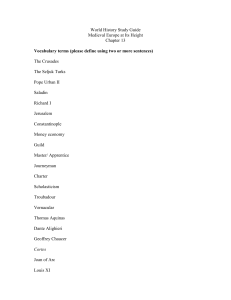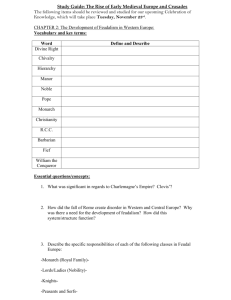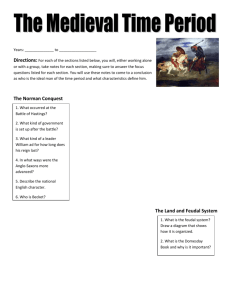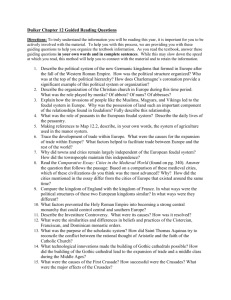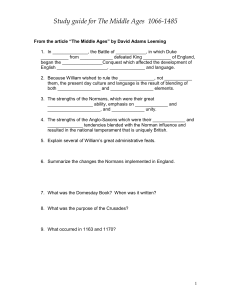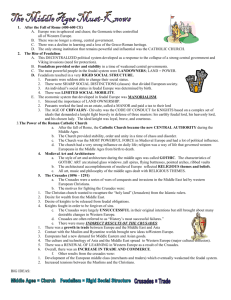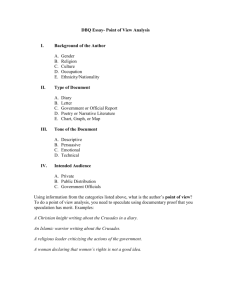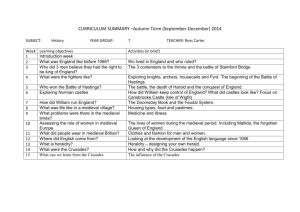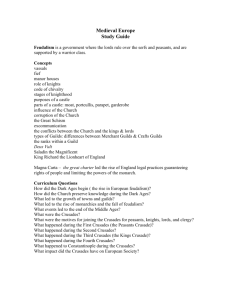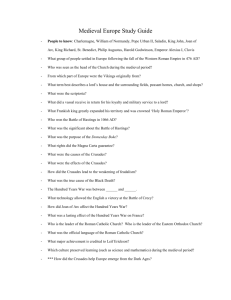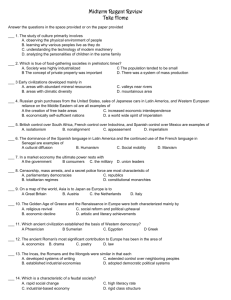Study Guide chapters 2,3, orange book 2013 REVISED
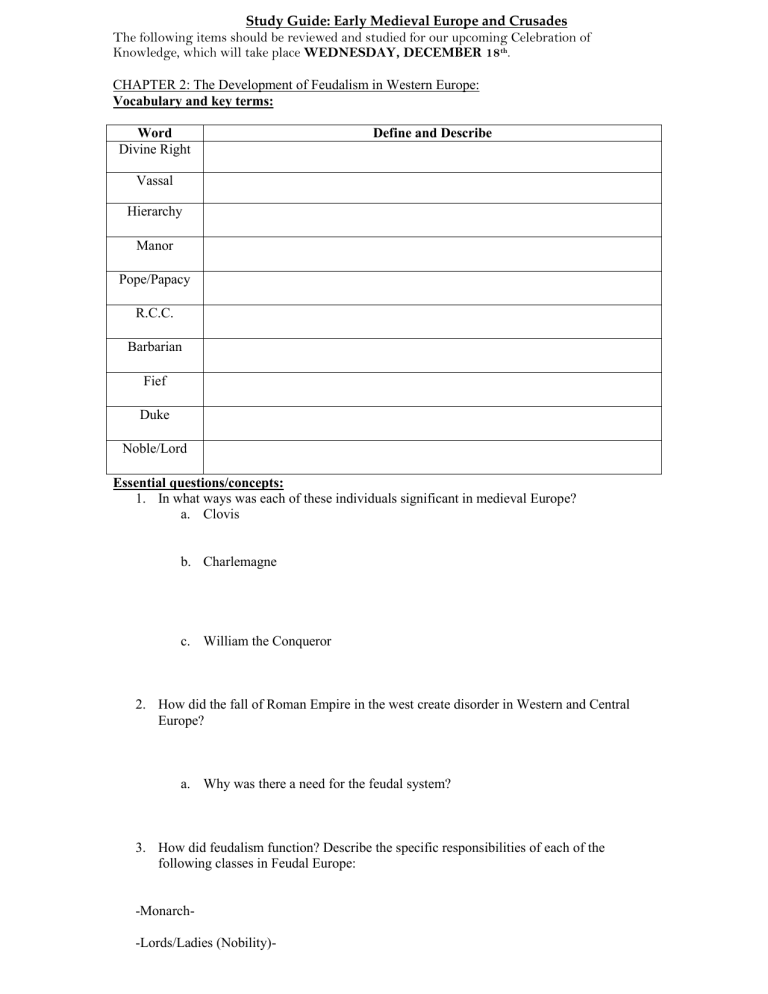
Study Guide: Early Medieval Europe and Crusades
The following items should be reviewed and studied for our upcoming Celebration of
Knowledge, which will take place WEDNESDAY, DECEMBER 18 th .
CHAPTER 2: The Development of Feudalism in Western Europe:
Vocabulary and key terms:
Word
Divine Right
Define and Describe
Vassal
Hierarchy
Manor
Pope/Papacy
R.C.C.
Barbarian
Fief
Duke
Noble/Lord
Essential questions/concepts:
1.
In what ways was each of these individuals significant in medieval Europe? a.
Clovis b.
Charlemagne c.
William the Conqueror
2.
How did the fall of Roman Empire in the west create disorder in Western and Central
Europe? a.
Why was there a need for the feudal system?
3.
How did feudalism function? Describe the specific responsibilities of each of the following classes in Feudal Europe:
-Monarch-
-Lords/Ladies (Nobility)-
-Knights-
-Peasants and Serfs-
4.
What was the code of chivalry? Describe the unique stages to becoming a knight. Why was this code so invaluable for the success of the feudal structure?
CHAPTER 3: The Role of the Church in Medieval Europe:
Vocabulary and key terms:
Word
Tithe
Define and Describe
Relic
Pilgrimage
Clergy
Friar
Monk
Nun
Monasticism
Rhetoric
Convent
Natural Law
Theology
Sacrament
Excommunicate
Monastery
Religious Order
Persecute
Essential questions/concepts:
1.
How did the R.C.C. impact the political, social, and economic systems of the medieval period?
2.
Describe the hierarchy and organization of the R.C.C. Why was there a need to for the
Church to be organized in such as way?
3.
Describe the means by which the R.C.C. influenced rulers in Medieval Europe. (Use the conflict between Gregory VII and Henry IV as a case study between the power of the
Pope vs. that of monarchs)
4.
By what means did people’s religious beliefs (salvation, sacraments, pilgrimages) affect daily life?
5.
In what ways did the R.C.C. influence art, architecture? (Focus special attention to the cathedral)
6.
Detail key aspects of the monastic way of life, (monk, and nun). How is this lifestyle similar and different from the life of a mendicant (friar)?
The Crusades: (Lesson 2, Chapter 10 Handout)
Vocabulary and key terms:
Word
Expel
Define and Describe
Constantinople
Shah
Sacred
Seljuk Turks
Inquisition
Sultan
Richard III
Reconquista
Saladin
Holy Land
Iberian
Peninsula
Anatolia
Essential questions/concepts:
1.
What were the major reasons for the First Crusade?
2.
Were all Crusades successful for Christians? Summarize the events of the First and Third
Crusades specifically. What impact did the Crusades ultimately have on Jerusalem?
3.
Discuss why were the Fourth Crusades considered, “one of the greatest crimes against humanity ever.”?
4.
What were the short and long term effects of the Crusades on Europe?
5.
Define the term ‘Cultural Diffusion’. In terms of the results of the Crusades, what ways did the Europeans/Catholics lose the battle, but still win the war?
